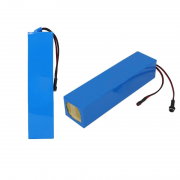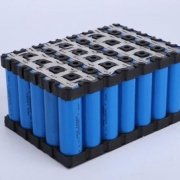The Difference Between a Lead-Acid Battery and a Lithium Battery for Electric Vehicles
In today’s China, there are thousands of international famous brands of electric vehicles on the market at this stage, and the two factions of electric vehicles with lead-acid batteries and lithium batteries have their own characteristics and advantages. Although electric vehicles are rapidly transforming For so many years, many people have been confused about the choice of batteries for a long time, and they do not know what the difference between the two is. Well, today we will talk about the difference between lead-acid batteries for electric vehicles and lithium batteries for electric vehicles.
The difference between lead-acid and lithium battery electric vehicles.
1. The appearance design of lithium battery is better than that of lead-acid battery.
Lithium batteries need to be much smaller in size and quality than lead-acid batteries. In most cases, the total weight of lead-acid batteries is 16-30 kg, and the size is relatively large; while the total weight of lithium batteries is 3 in most cases. -3.0KG, the body is relatively small, so it is light for riding and convenient for shipping. In most cases, lithium battery electric vehicles are light and beautiful, easy to move, and many lithium battery electric vehicles can also be folded.
1. Durability and battery life:
The service life of lead-acid batteries is usually 2 years, while lithium batteries are more durable, with a lifespan of 4-5 years; and lead-acid batteries are usually fully charged and discharged within 300 cycles, while lithium batteries are fully charged and discharged. more than five hundred times.
2. Volume quality and ease of operation.
Compared with the lightweight body of only 2.5/3 kilograms of lithium batteries, lead-acid batteries of the same capacity usually weigh about 16/30 kilograms; not only the battery quality is relatively large, but also the volume; The disassembly design makes it more convenient and quick to carry.
3. Market price and cost performance.
At this stage, the mainstream lead-acid batteries on the market are about 450 yuan, while the price of lithium batteries is more expensive at 1,000 yuan; the prices of the two types of batteries are different, and the corresponding electric vehicle prices are also relatively different. At the same time, the warranty period of lithium battery is 1 year longer than that of lead acid, and the warranty period is 2 years.
4. Cruising range and battery capacity.
The same is a 48V battery. Under the condition of full power, the cruising range of lead-acid/lithium battery electric vehicles is almost the same. In fact, the key lies in factors such as speed and motor size. Naturally, lead-acid batteries will slightly exceed lithium batteries in terms of battery capacity.
In general, lead-acid batteries are the most numerous. The price of lead-acid batteries is the lowest and most common. China is the largest producer and exporter of lead-acid batteries in the world. It contains relatively few polluting components and has good recyclability. The disadvantage is that the specific volume is small. In other words, under the same capacity, the battery weight and volume are large. At this stage, most of the lead-acid batteries are transformed from floating charge batteries. Float rechargeable batteries reject fast charging and high-current discharge. Although professional and technical personnel have spent a lot of effort and made fruitful improvements, they can be put into practical use, but their lifespan is still very unsatisfactory. Which one is better depends on your own cost budget and needs. However, considering that after the announcement of the new national standard national policy, electric vehicles must be changed to the registered side before they can ride on the road normally, so it is best to choose an electric vehicle that meets the standard.







